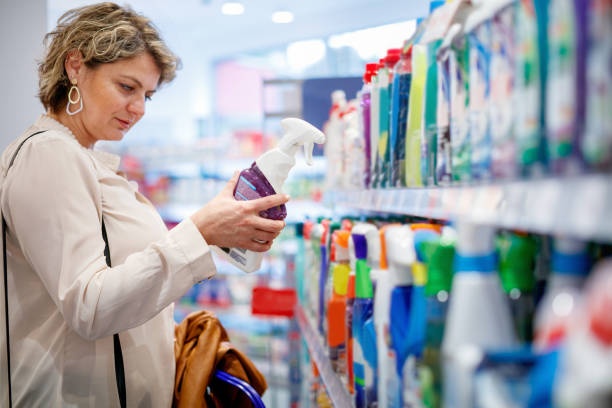The Rise of Clean Consumer Goods in 2025

As we move through 2025, clean consumer goods are taking center stage in nearly every industry. Shoppers are prioritizing products that are made with simple, transparent ingredients, environmentally friendly materials, and a commitment to ethical practices. From skincare and cleaning supplies to everyday lifestyle products, the shift toward clean, conscious choices is clear.
Evolving Routines and the Rise of Conscious Alternatives
Daily routines in 2025 are increasingly shaped by cleaner, more intentional product choices. From the moment people start their day—with plant-based skincare and natural oral care—to how they clean their homes or choose their snacks, there’s a noticeable shift toward products that align with personal wellness and environmental values. One such example is Prime Nic Pouches, which represent the new generation of clean, discreet lifestyle products designed for mindful consumers who value simplicity, quality, and innovation.
Across multiple product categories, consumers are looking for options that prioritize safe ingredients and minimal waste. Refillable body washes, compostable packaging, fragrance-free home cleaners, and water-saving formulas are gaining popularity. The demand isn’t just about avoiding harmful substances; it’s about embracing smarter, future-focused living.
Clean Beauty: A Movement, Not a Trend
Clean splendor is one of the most prominent and fastest-evolving classes in easy consumer goods. In 2025, beauty isn’t pretty much overall performance anymore—it’s approximately purpose. Consumers expect their skincare, haircare, and cosmetics to be free from suspect elements and to be sourced from obvious and accountable manufacturers.
Terms inclusive of “cruelty-free,” “vegan,” “paraben-free,” and “plant-based” have long since passed from being niche concerns to mainstream expectations. Consumers are carefully reading labels, carrying out their very own research, and deciding on products based on ingredient integrity as well as brand values. Consequently, a great deal of the conventional beauty industry is being compelled to reformulate, whilst more recent clean splendor brands are climbing swiftly, driven by means of committed customer bases and intense social media support.
Second, retailers of beauty have themselves made adjustments, sectioning off entire aisles of clean-certified products, instilling confidence, and simplifying the capacity for clients to select up safer alternatives. The increase of smooth splendor is part of a larger movement of traumatic openness and looking to experience correctness internally and externally, about what we place on our bodies day by day.
Sustainability Starts at the Source
Clean patron goods aren’t just about what’s inside the product—in addition, they remember how the product is made. In 2025, sustainability starts off evolving at the supply. Consumers are asking in which these elements come from, how they are harvested or produced, and what environmental or social impact is have inside the supply chain.
Brands that lead with traceability and ethical sourcing are gaining traction. Certifications for honest change, organic farming, and climate neutrality are not simply stamps—they’re proof factors that matter inside the shopping process. Companies using regenerative agriculture, recycled substances, and circular economy manufacturing are setting the usual for future-forward product improvement.
Transparency is the brand-new foreign money. Whether it is through blockchain-primarily based tracking, QR-code scanning, or in-depth website disclosures, humans want to recognize the full journey of their product from farm to shelf to disposal.
The Packaging Revolution
As the easy product motion evolves, so does its approach to packaging. In 2025, packaging is being reimagined with sustainability at the core. Plastic options like compostable wraps, biodegradable movies, and recycled cardboard are gaining traction. More brands are also investing in refillable systems, presenting focused formulas or bulk dispensers to reduce single-use waste.
Products are actually being judged no longer simply on what is inner, however how they’re provided and disposed of. Minimal, aesthetically attractive packaging crafted from renewable substances is becoming the new norm. Consumers price manufacturers that lessen excess packaging and make recycling or reusing intuitive.
Beyond aesthetics, packaging is increasingly serving a functional and educational roleclearly highlighting component transparency, ethical sourcing, or carbon offset projects. It’s no longer just about being “green; it’s about showing clients that their purchase contributes to a larger high quality impact.
The Role of Technology and Innovation
Technology is playing a primary function in the easy customer goods revolution. Smart equipment, apps, and platforms now help purchasers understand ingredients, verify claims, and discover sustainable alternatives more without difficulty than ever before. Barcode-scanning apps and AI-pushed recommendation engines are supporting shoppers in making quicker, extra informed picks that align with their preferences and values.
On the manufacturing aspect, agencies are using AI to optimize formulation for safety and effectiveness, reduce waste within the delivery chain, and better forecast patron demand. Innovations like lab-grown substances, waterless formulations, and biodegradable synthetics are making smooth goods not only possible but also scalable and green.
As transparency and duty grow, consumers are getting empowered to make decisions that help their fitness, values, and the planet without compromising on high-quality or revel in.
Clean Living Is Here to Stay
The upward thrust of clean patron goods in 2025 marks an effective shift in both industry standards and patron expectations. What commenced as a spot motion has now become a global mindset. Clean living rooted in simplicity, sustainability, and integrity—isn’t always just influencing the products people pick but also the manner they live, keep, and assume.
Looking ahead, smooth consumer items will continue to define the destiny of well-being, innovation, and brand loyalty. Companies that prioritize transparency, ethical sourcing, and planet-friendly practices will lead the way in shaping a healthier, more conscious international community. For purchasers, the message is apparent: clean is now not an alternative—it’s the brand new default.






